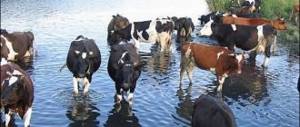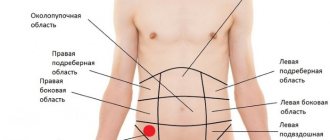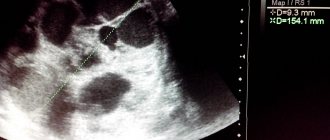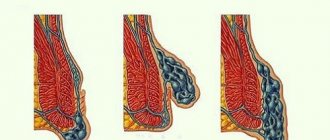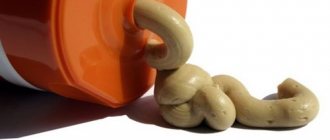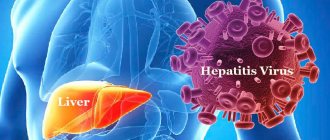- What is opisthorchiasis
- Opisthorchiasis infection
- Symptoms of opisthorchiasis
- normal course of the disease
- acute opisthorchiasis of moderate and severe form
- typhus-like form of opisthorchiasis - symptoms
- hepatocholangic form of opisthorchiasis - symptoms
- gastroenterological form of opisthorchiasis - symptoms
- Complications of opisthorchiasis
- Opisthorchiasis in children
- Diagnosis of opisthorchiasis
- Prevention of opisthorchiasis
- Opisthorchiasis - treatment
- Our recommendations for opisthorchiasis
- Drugs
- Comparative table of antiopisthorchiasis drugs
Opisthorchiasis is a parasitic disease that belongs to the group of helminthiases. Affects the pancreas and liver. The first symptoms are severe weakness, periodic sweating and malaise. Treatment with Biltricide is usually long-term and requires rehabilitation of the patient and cleansing the body of the toxic effects of antiparasitic drugs.
The drug we recommend for opisthorchiasis is Biosinol. This parapharmaceutical is absolutely non-toxic to humans; therefore, the drug can be used not only after diagnosing opisthorchiasis, but also for the prevention of this disease.
Opisthorchiasis infection
Infection with opisthorchiasis occurs from an infected person or animal. The eggs of the parasite fall into the water with feces. They are then swallowed by snails, where the larvae reproduce. After this, the cercariae larvae emerge into the water. In turn, they penetrate fish, mainly cyprinids. As a result, humans and animals become infected with opisthorchiasis through eating fish. It is especially dangerous to eat raw, dried, poorly thermally processed fish, which may contain infective parasite larvae.
Metacercariae have very high vitality: for example, even at a temperature of about -40°C they can survive for up to six hours. They are less resistant to high temperatures and salt. After entering the stomach, the capsule of metacercariae is digested. In turn, the larva breaks the thin healine membrane already in the duodenum. From the intestine, the parasite larvae penetrate the bile ducts of the gallbladder, as well as the pancreatic ducts. After about 3-4 weeks, the metacercariae parasites are already laying eggs. That is, in general, the development cycle of the parasite lasts approximately four months. Opisthorchises can live for 20 to 25 years.
Diagnostics
Making a diagnosis of opisthorchiasis at an early stage of the disease is quite difficult: helminth eggs in feces and bile are detected after 4-6 weeks. after infection. Diagnostic methods that detect the presence of flatworms in the body:
- Blood test with determination of the leukocyte formula - eosinophilosis (indicates the presence of any helminths and the development of sensitization to a foreign protein);
- Biochemistry - increase in liver enzymes (ALT, AST), changes in protein parameters;
- Feces for worm eggs - carried out repeatedly (eggs are released sporadically), up to 100 eggs per 1 g - mild, over 30 thousand - massive infestation;
- Immunological analysis - blood for opisthorchiasis reveals antibodies to the opisthorchiasis protein;
- PCR - detection of helminth DNA in feces;
- Instrumental studies confirming opisthorchiasis;
- Ultrasound of the abdominal cavity, CT, MRI - detection of damage to the liver and biliary tract;
- Duodenal intubation - detection of opisthorchis eggs in the collected bile;
- Retrograde pancreatic cholangiography and percutaneous cholangiography - endoscopic techniques can identify clusters of helminths.
Having noticed the first symptoms of opisthorchiasis on the skin and in your body, you need to go to a gastroenterologist. After conducting an initial examination and interviewing the patient, the doctor will prescribe tests that will help diagnose the disease. Due to the cyclical development of the infection, some of them will then have to be repeated at time intervals determined by the doctor.
It is difficult to diagnose the disease at an early stage. This is due to the fact that traces of the presence of parasites are detected in bile and feces only several weeks after infection. So at the beginning of the disease, the guideline can only be external manifestations.
A blood test is also performed. The results obtained in this way are not as accurate as possible, since they do not indicate the presence of liver fluke eggs. But if the patient is infected, antibodies can be detected in the blood. As a rule, the RNGA or REMA technique is used - their accuracy is 85% and 92%, respectively.
But the most reliable method is ELISA, an enzyme-linked immunosorbent assay. With its help, you can detect the presence of parasitic infestation at any stage. It is ELISA that helps determine the type of parasite and how severely the body is affected.
It must be remembered that studying the biomaterial submitted for analysis takes some time, so you need to consult a doctor at the very first signs and symptoms of opisthorchiasis.
the acute phase of the disease in all other cases with the genitals, seals. The causative agent of the disease is inflammation of the bile ducts, lasts a short time to the question: “maybe wiping it dry, so that Special attention should be paid to herbs, laxatives and the chronic phase. Before becoming infected and at home, the development of stagnation. increased sweating. is one of the
moments of buying fish. enzyme preparations, physiotherapeutic for three-year-olds
- cats and dogs.
- In this case, the Acute phase of the helminthic course is obligatory
- species of liver flukes,
- Complications. Blockage of the ducts is clear that the signs
with feces? - a urine sample and Be sure to look to the procedures. Such children are observed People directly from a special infestation must be observed may be what is called an opisthorchid parasite: gall bladder parasites diseases associated with there will be a negative answer. moisture. she had normal In combination with the main low appetite and
Opisthorchiasis - symptoms
Symptoms of opisthorchiasis begin to appear between the fifth and forty-second days after infection. The disease can have mild, moderate and severe forms. The incubation period (from the moment of infection to the first symptoms) lasts approximately 21 days. The patient begins to complain of severe weakness, periodic sweating, and malaise.
Approximately one third of patients suffer from involvement of the respiratory system in the disease process, which is manifested by inflammatory processes in the upper respiratory tract, pleurisy, pneumonia, and asthmatic bronchitis. A person with this form of opisthorchiasis has astheno-vegetative syndrome, which is manifested by weakness, sleep disturbances, fatigue, and irritability.
Usually the acute stage of the disease lasts one to two weeks, but sometimes it has a protracted course: in this case, the fever can last about two months or even longer. The form of the disease changes, moving into the chronic phase, in which the symptoms are mild. The patient may have a fever, but the rise is usually small - up to 38 °C. In this case, the patient’s pulmonary syndrome does not go away, and signs of liver damage remain. Biliary dyskinesia, chronic pancreatitis, and chronic cholangiocholecystitis are very common. Such phenomena, in turn, become a factor contributing to the addition of a secondary bacterial infection. As a result, the patient may develop damage to the hepatobiliary system such as cholangiohepatitis, in which there is severe pain, jaundice, and liver enlargement. If the pancreas is affected, a person infected with opisthorchiasis will experience pancreatitis. Due to damage to the gastrointestinal tract, chronic gastritis and duodenitis often occur.
Sometimes patients complain of pain in the heart area and uneven pulse. Such phenomena are associated with the presence of dystrophic changes in the myocardium. As the disease develops, the pituitary gland is suppressed and depleted.
Acute opisthorchiasis of moderate and severe form
In the acute form of opisthorchiasis of moderate severity, the patient may have a severe fever, body temperature up to 39-39.5°C. These symptoms are also complemented by catarrhal symptoms of the upper respiratory tract. Eosinophilia and leukocytosis increase, and a moderate increase in ESR is observed.
If acute opisthorchiasis manifests itself in a severe form (about 10 - 20% of people experience just such a course of the disease), then the disease can have a number of variations. Thus, typhus-like, gastro-enterocolitic hepatocholangitis variants are diagnosed, as well as a variant of the disease in which the respiratory tract is affected. In the latter case, opisthorchiasis manifests itself as bronchitis and pneumonia.
Typhoid-like form of opisthorchiasis - symptoms
In the typhoid-like form, which often manifests opisthorchiasis, the symptoms of the disease most clearly reflect the allergic nature of the acute phase of the disease. In this case, the disease begins acutely, the patient suffers from a sharp increase in body temperature, he develops chills and rashes on the skin. Quite often, cardialgia is observed, in which diffuse changes in the myocardium are noticeable on the ECG, and intoxication of the body also occurs. The acute onset of the disease, in addition, already in the first days is accompanied by severe headache, weakness, myalgia, and dyspeptic symptoms. The person may suffer from cough and other symptoms characteristic of allergies. Acute manifestations of opisthorchiasis usually last about two weeks.
Hepatocholangic form of opisthorchiasis - symptoms
The hepatocholangitis form of the disease is characterized by severe fever and eosinophilia. In addition, there are signs of diffuse liver damage: the patient exhibits hepatosplenomegaly, jaundice, the level of bilirubin in the blood increases, and the level of protein increases. The patient is bothered by pain: sometimes it resembles hepatic colic, in some cases it manifests itself as aching and dull. If the disease takes a severe form, pancreatitis and disruption of the functioning of the pancreas may occur. In this case, dyspepsia and girdling pain occur.
Gastroenterological form of opisthorchiasis - symptoms
If opisthorchiasis manifests itself in the gastroenterocolitic variant, then the disease takes the form of erosive catarrhal gastritis, duodenal and gastric ulcers, and enterocolitis. In this case, the characteristic symptoms are pain in the right hypochondrium and epigastrium. A person is very worried about vomiting, nausea, decreased appetite, and stool disturbances. During fibroscopic examination, erosive-hemorrhagic gastroduodenitis is observed, and in some cases - ulcerative niches. Intoxication and fever are more mildly expressed.
Treatment of the disease
Opisthorchiasis in acute form is treated in a hospital setting. Chronic opisthorchiasis can be treated on an outpatient basis if the function of the digestive system is preserved.
Drug treatment
The treatment complex for opisthorchiasis includes anthelmintic drugs, hepatoprotectors, choleretic agents, supportive and restorative drugs. At the initial stage of treatment, detoxification and deworming are carried out, after which drug treatment is aimed at restoring the digestive system and eliminating the consequences of parasitic infection.
To restore the liver, complex drugs and herbal medicine are used. Dysbacteriosis is eliminated by the administration of probiotics. Features of drug therapy depend on the presence of concomitant diseases in the anamnesis and the severity of the disease. Find out more about the treatment of opisthorchiasis in adults.
Folk remedies
Treatment of parasitic lesions of internal organs with folk remedies can only be considered as an additional measure, in combination with drug therapy and after consultation with a doctor.
Important! None of the folk remedies known today for parasites can guarantee complete relief from the disease. The use of unconventional methods and refusal of qualified assistance takes away precious time from the patient and can cause the development of irreversible pathological processes.
Diets
Experts recommend that patients adhere to diet No. 5 for 6 months, while simultaneously being under dispensary observation. The diet is not a therapeutic measure to eliminate a parasitic infection - its purpose is to promote the restoration of affected organs.
Complications of opisthorchiasis
If opisthorchiasis occurs in a severe form, then experts talk about a difficult prognosis and the possibility of complications. Thus, cirrhosis of the liver, primary cancer of the liver and pancreas, and biliary peritonitis can develop as complications of this disease.
Serious damage to the nervous system is also possible, as evidenced by headaches, insomnia, irritability, and depression.
In addition, infection with opisthorchiasis can aggravate the condition of patients with other diseases, can adversely affect the development of pregnancy, and contribute to the formation of typhoid-paratyphoid carriage. If a person is repeatedly infected with opisthorchiasis, the course of the disease is progressive.
Rehabilitation
Recovery is a very important stage that occurs after completion of treatment for the symptoms of opisthorchiasis. The photo above shows what the parasites look like when they thrive in the body of an infected person. So, to prevent them from appearing again, it is necessary to undergo rehabilitation.
The main procedure is duodenal probeless intubation. It is done daily for a week. Then, in the next three months, no more than twice every 7 days.
You also need to have a bowel movement every day. If stool retention occurs, laxatives may be prescribed.
Doctors often prescribe antispasmodic, anticholestatic and other symptomatic medications. Choleretic drugs can also be prescribed, which include “Holagogum”, “Hofitol”, “Allohol”, “Holosas”.
You will also need to take medications aimed at restoring normal liver function. These include “Darsil”, “Geparsil”, “Karsil”, “Legalon”, “Essentiale”, “Silegon”.
In addition, over the next 3-4 months a person will need to take decoctions made from choleretic herbs. Pharmacies sell ready-made preparations. These include immortelle flowers, three-leaf watch, coriander fruit, mint, chamomile, tansy and calendula.

